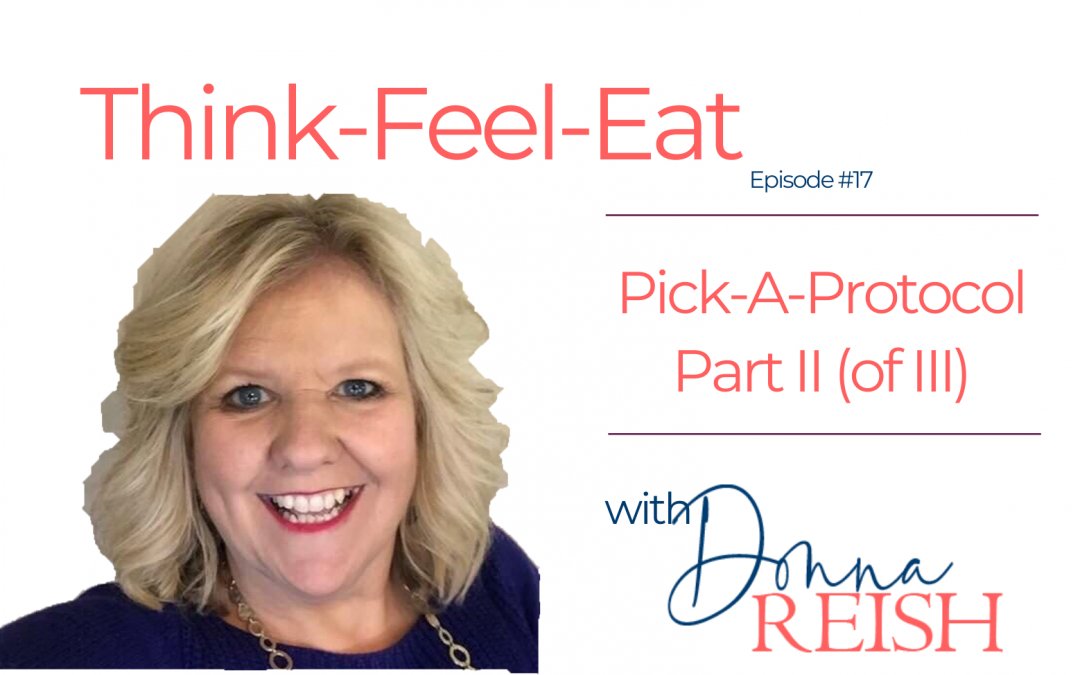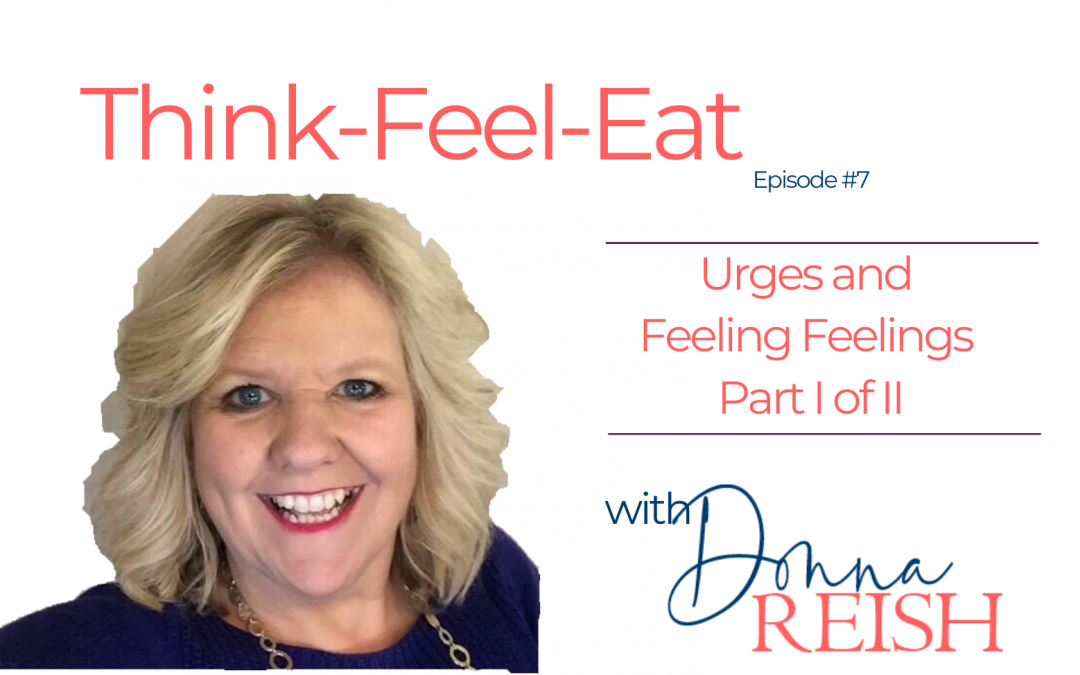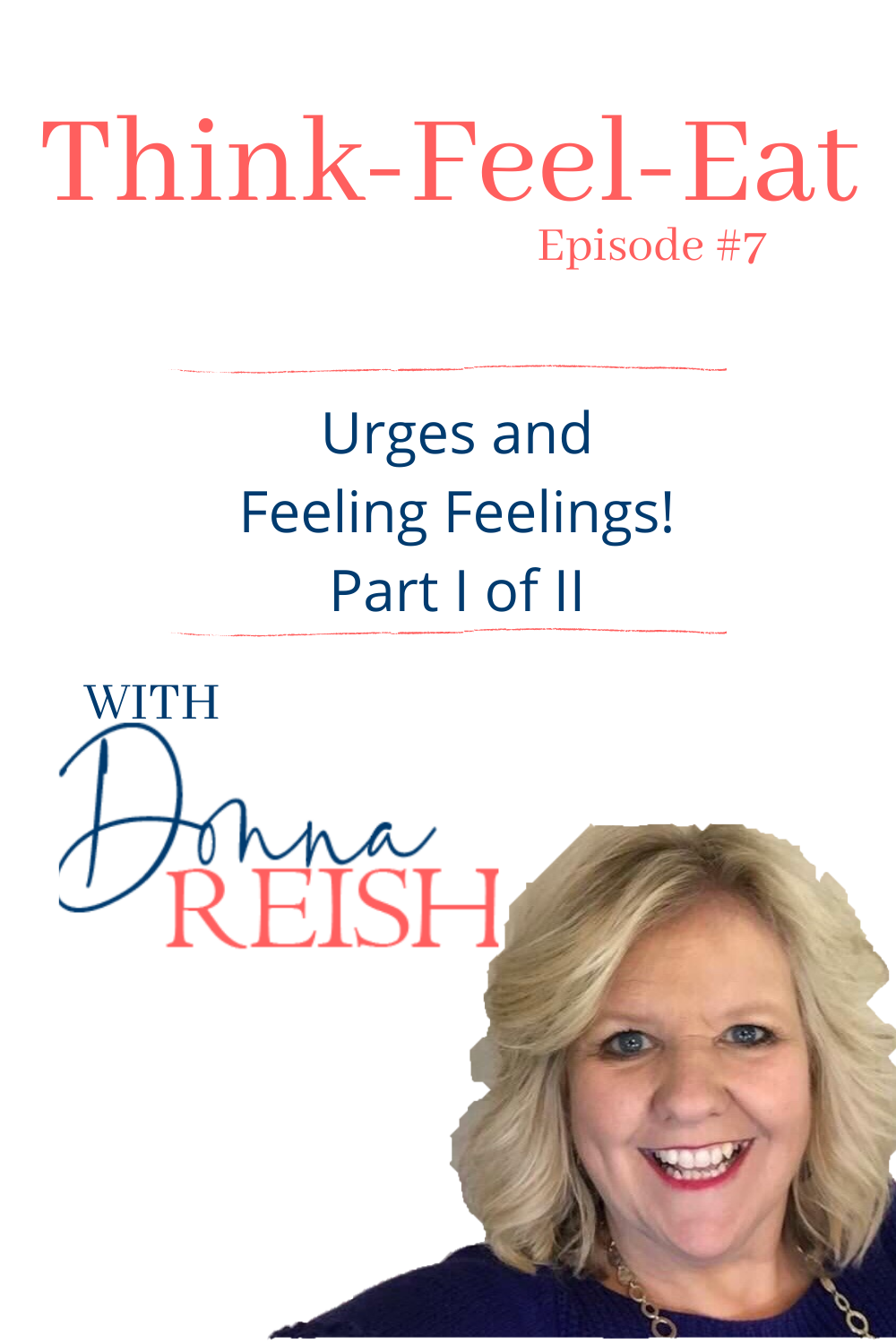Episode 3—Think-Feel-Eat Broadcast/Podcast: Bullying Ourselves to Goal Weight With Negative Thoughts? Part II of II
I. REVIEW From Last Week: Negative Thoughts and Beliefs About Us—They Keep Us Stuck in Our Weight Loss Efforts
Get your handout for today’s new material (and print it off and fill it in—you can change your thoughts!)
A. Beliefs
1. But a belief is just a Thought that we have thought over and over and over again
a. Cinderella—“A dream is a wish your heart makes…when you’re fast asleep. In dreams you will lose your heartaches…whatever you wish for you keep.”
b. “A Belief is a Thought your mind thinks…over and over again. Change Thoughts, you will change your Beliefs too…with new Thoughts you’re sure to win!”
2. Remember, What to Say When You Talk to Yourself, tells us that the brain is like a computer, and it believes whatever we tell it over and over again
3. So….if we can manage our brain and get ahold of those negative, recurring Thoughts about ourselves and turn them around, we can change our Beliefs about ourselves—and our Feelings and ultimately our Actions.
B. Negative Thoughts About Us
1. A negative thought is any thought that produces a result that is NOT a result we are trying to achieve; we think they are facts
2. We can change negative thoughts in general and negative thoughts about our weight and size specifically
C. We Look for and Find Evidence for Our Negative Thoughts About Us
1. Fact of life: When we think something about someone (even ourselves!), we look for evidence that those thoughts are true—we enumerate them, stack them up, and prove the Thought!
2. We become preoccupied with finding evidence for those Thoughts—even if we don’t mean to!
II. REVIEW From Last Week: Managing Those Negative Thoughts About Us
A. We can’t just keep the old negative ones and add positive ones onto them
1. We need to get rid of the current negative ones
2. We must believe that we need to change our Thoughts
3. We must believe that we can manage our minds if we work on it
B. We must question our old negative thoughts
a. Is this really a fact? (Usually not…)
b. Do I want this thought?
c. Can I change this thought?
III. Three Exercises
A. Exercise 1: List Positive Non-Weight-Related Thoughts
1. Let’s start with the positive thoughts you have about yourself that are non-weight related
a. These will not be weight/size/body/fitness related
b. We need a library of positive thoughts
2. Ask for help from a friend or family member if needed—ask them what they think you like most about yourself unrelated to weight (not what they like…but what they think you like!).
B. Exercise 2: List Current Positive Weight-Related Thoughts
1. List anything that you even SOMETIMES think about yourself that is good and weight or food or size or fitness related
2. These can be as simple as “I like a lot of vegetables”; “I love walking”; I know how to make low fat skillet dinners” etc.
C. Exercise 3: Replace Negative Weight-Related Thoughts
1. Next, list the negative thoughts and beliefs you have about weight/size/body/fitness
a. Be honest!
b. You’re not going to keep them—but you can’t get rid of them if you don’t acknowledge them
c. You might think they’re true—you might think they’re facts; you might think they’re real…..but even the real ones that are changeable features can be tweaked to serve you better
2. Next list positive thoughts you would like to have about your weight/size/body/fitness
a. All the way to the right…..list the linked ones first (the ones that are opposite of the negative ones)
b. At the bottom, add any other non-linked ones you would like to believe
c. Keep adding to this
3. In the middle, list the Monkey Bar Thoughts That You Can believe right now
a. Example Negative: I always overeat after 8:00
b. Example Thought I Want: I decide the night before what my eating hours will be the next day
c. Monkey Bar Thought: I am learning how to decide the night before what my eating hours will be the next day OR I can write down a longer eating window tomorrow but then choose to shorten it OR I can eat snacks after 8:00 only at the dining room table.
d. If you can’t come up with many “monkey bar” thoughts for your negative thoughts around weight, you might need to start with non-weight ones from this list that you already believe—
i. For many years, I wanted to write a book called “If I’m so clever, why can’t I lose weight?”…..I couldn’t understand why I could do certain things but not around weight loss!
ii. (Now I know it’s because of my brain, neurotransmitters, hormones, addictive food qualities, not using my adult brain, eating all the time…..all the things!
Next Intermittent Fasting Session will begin on March 2nd! Sign up here using SAVE20 for a $20 discount: intermittentfastingwebinar.com


























